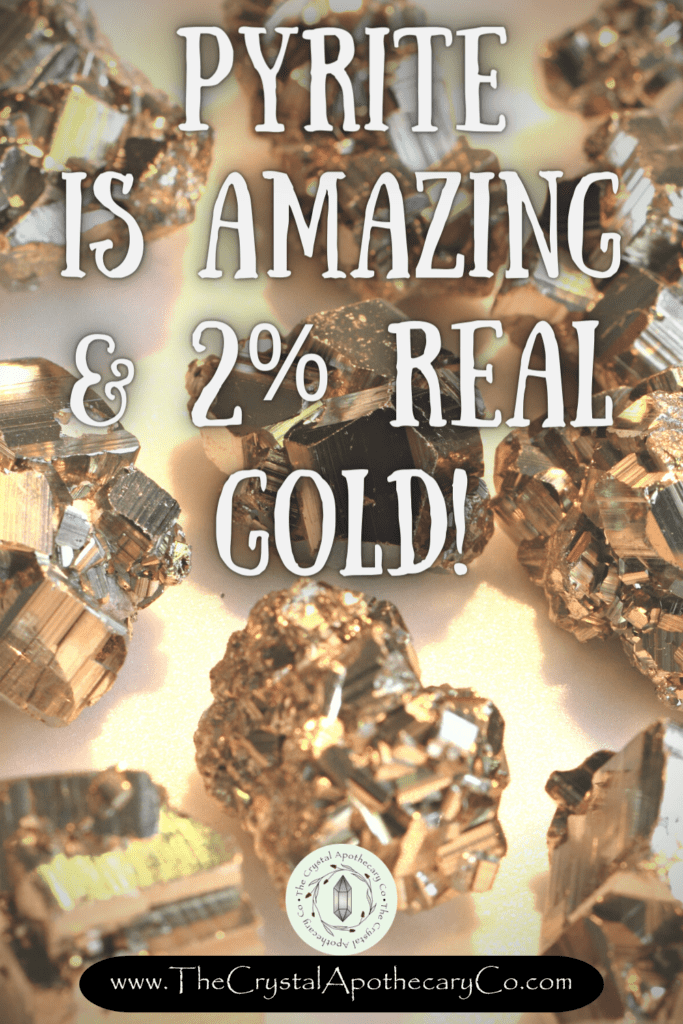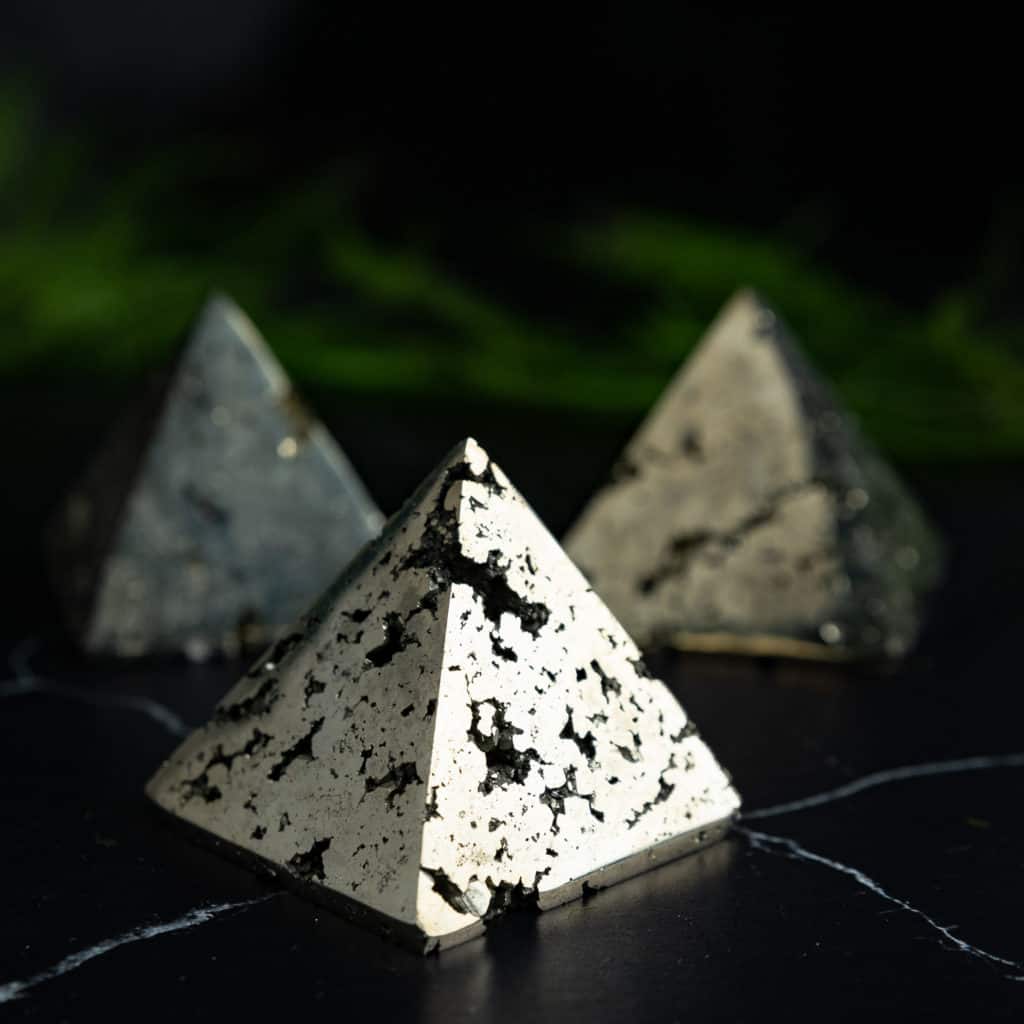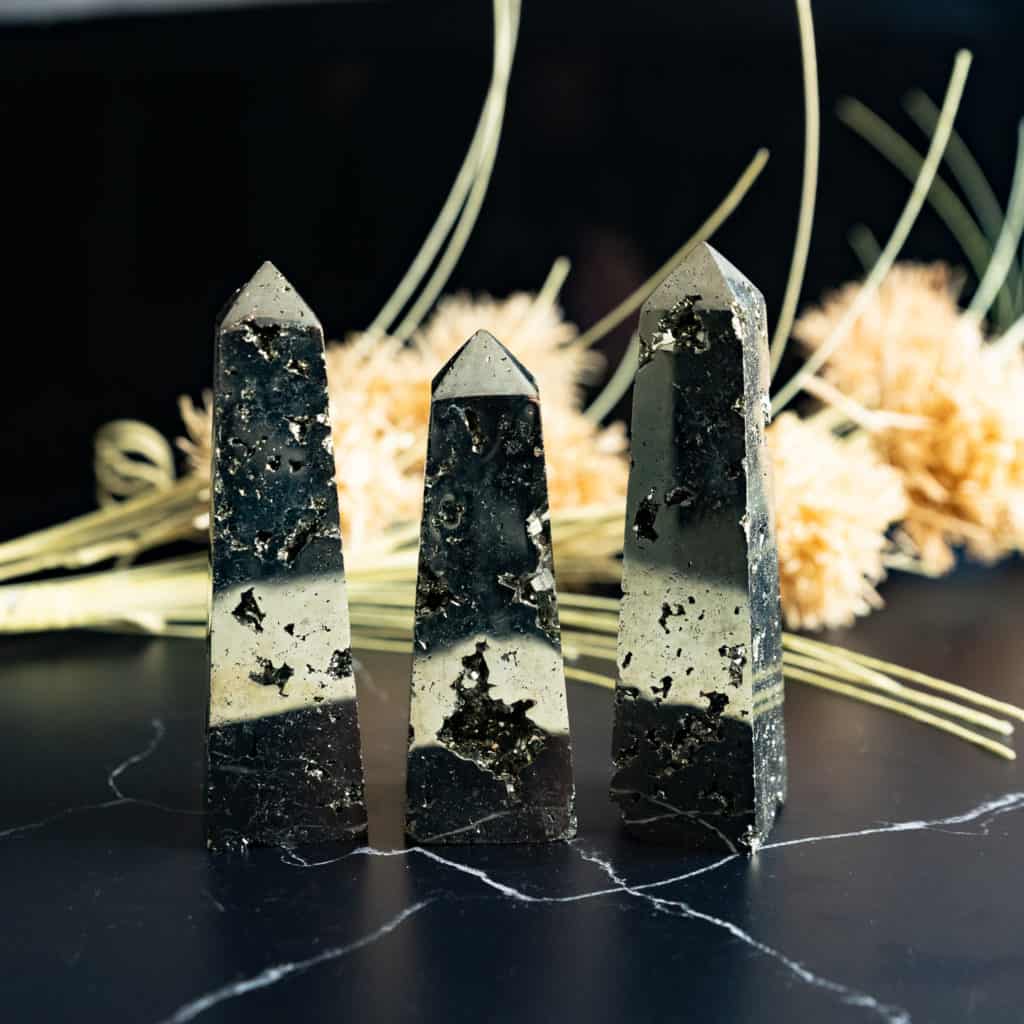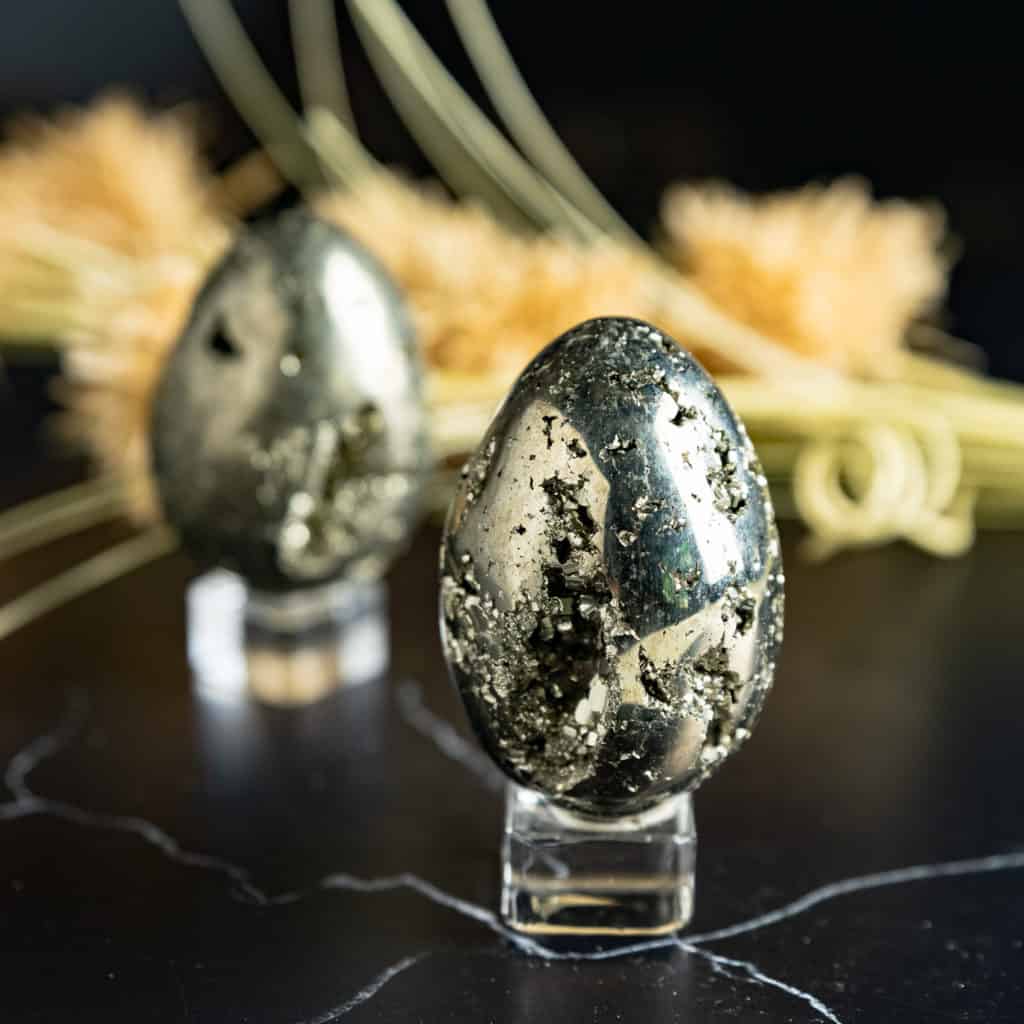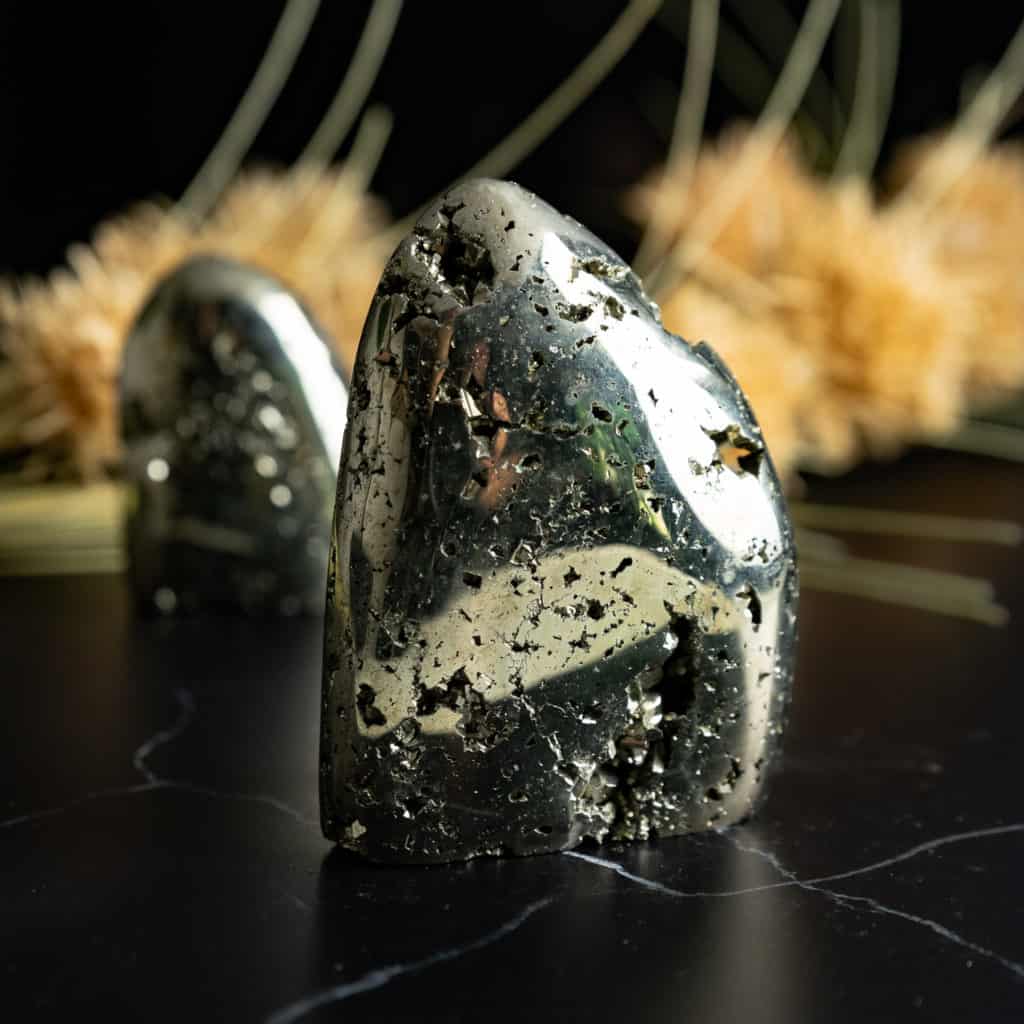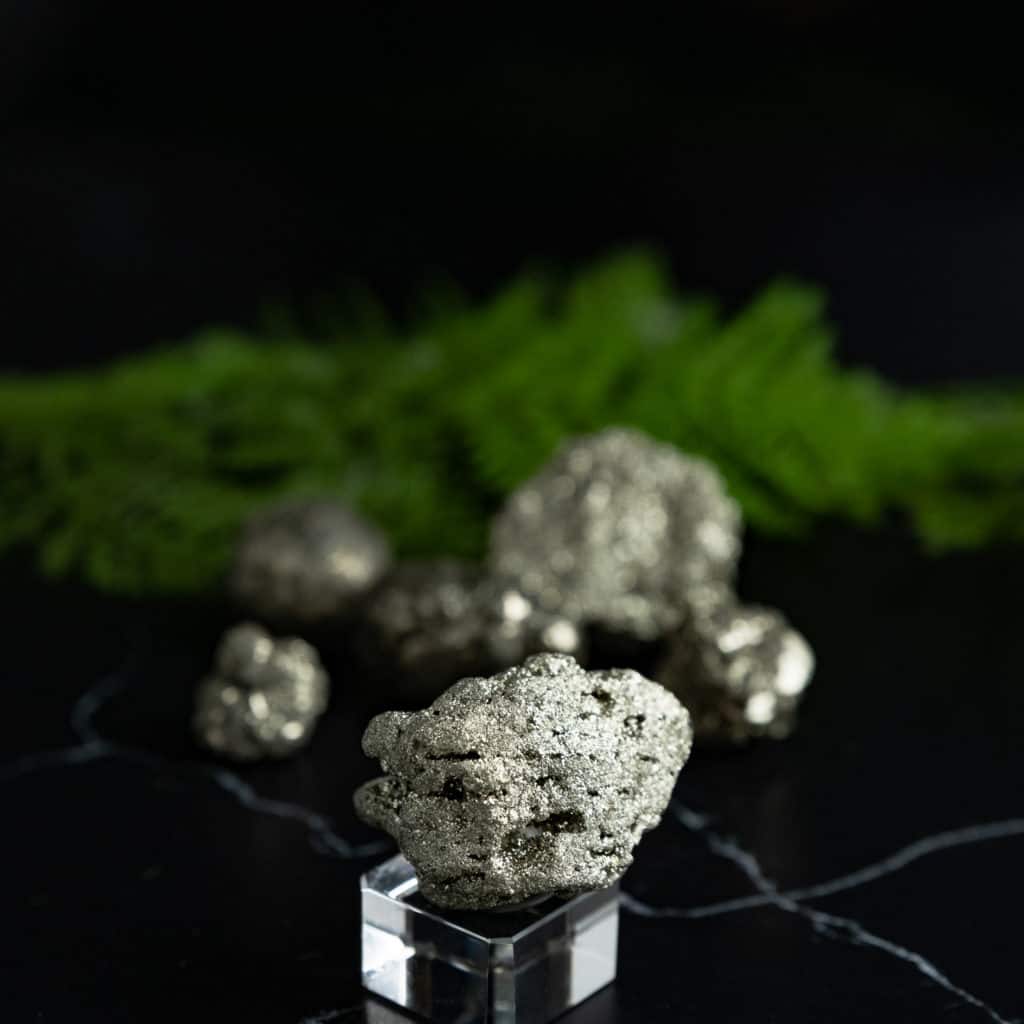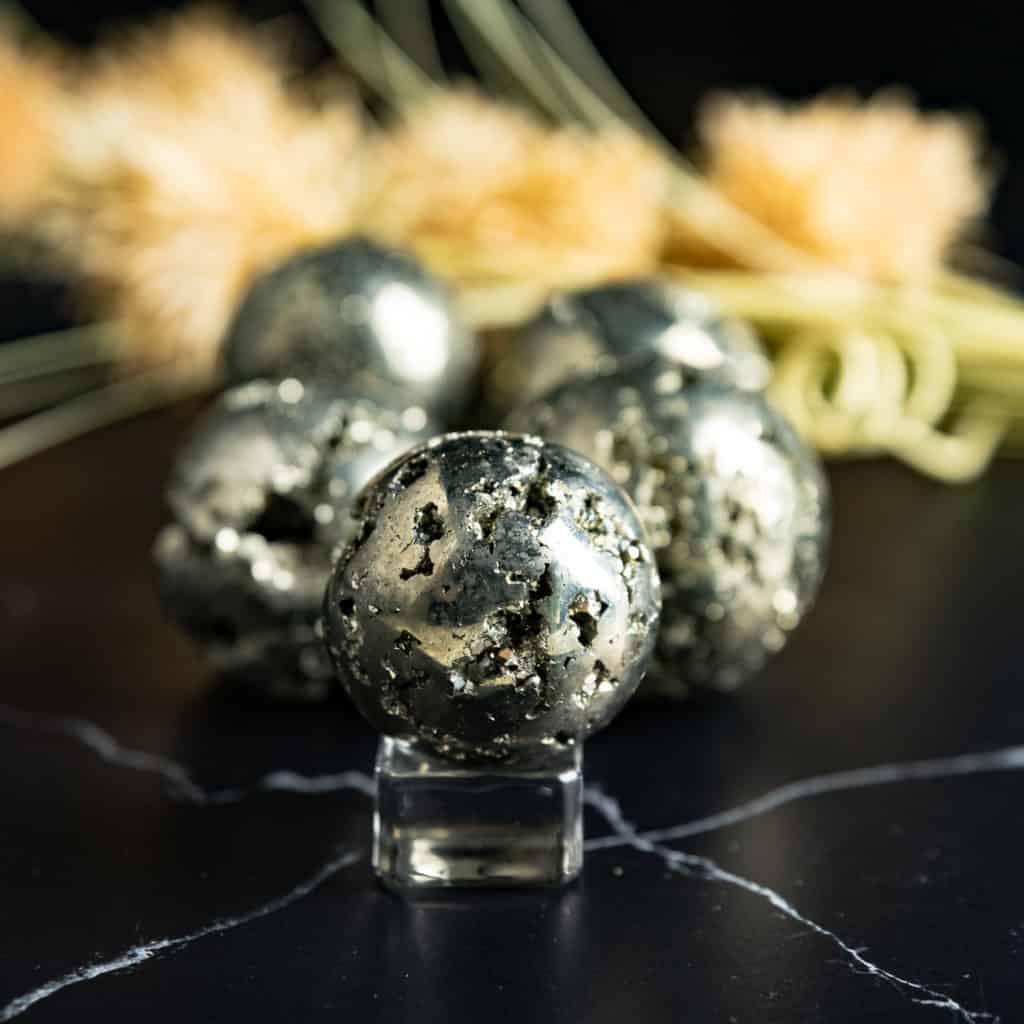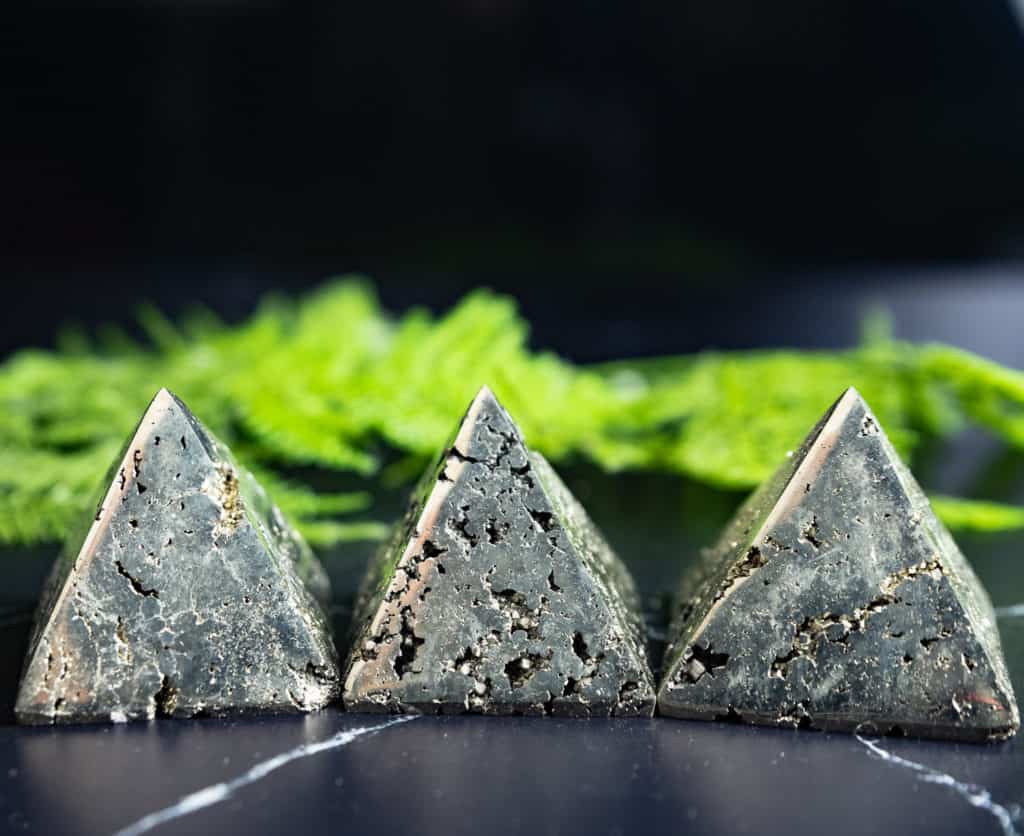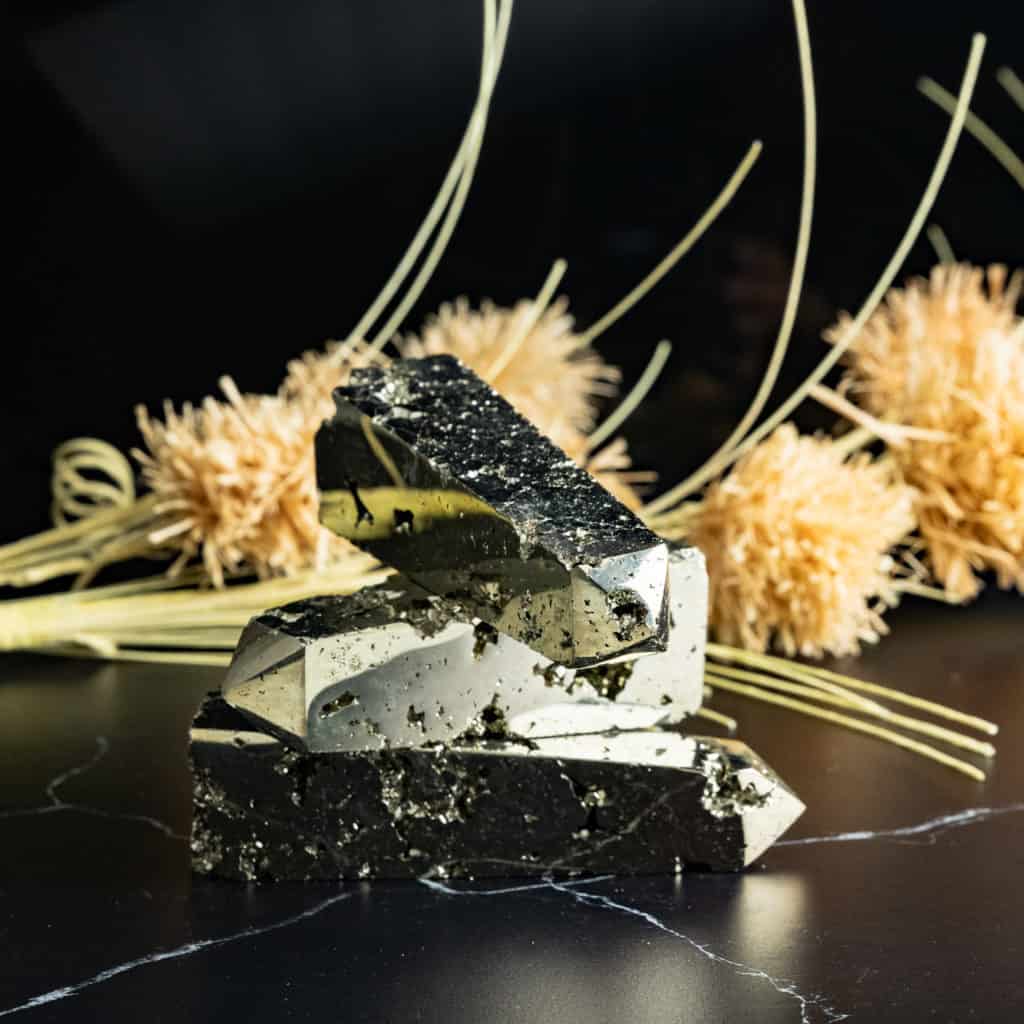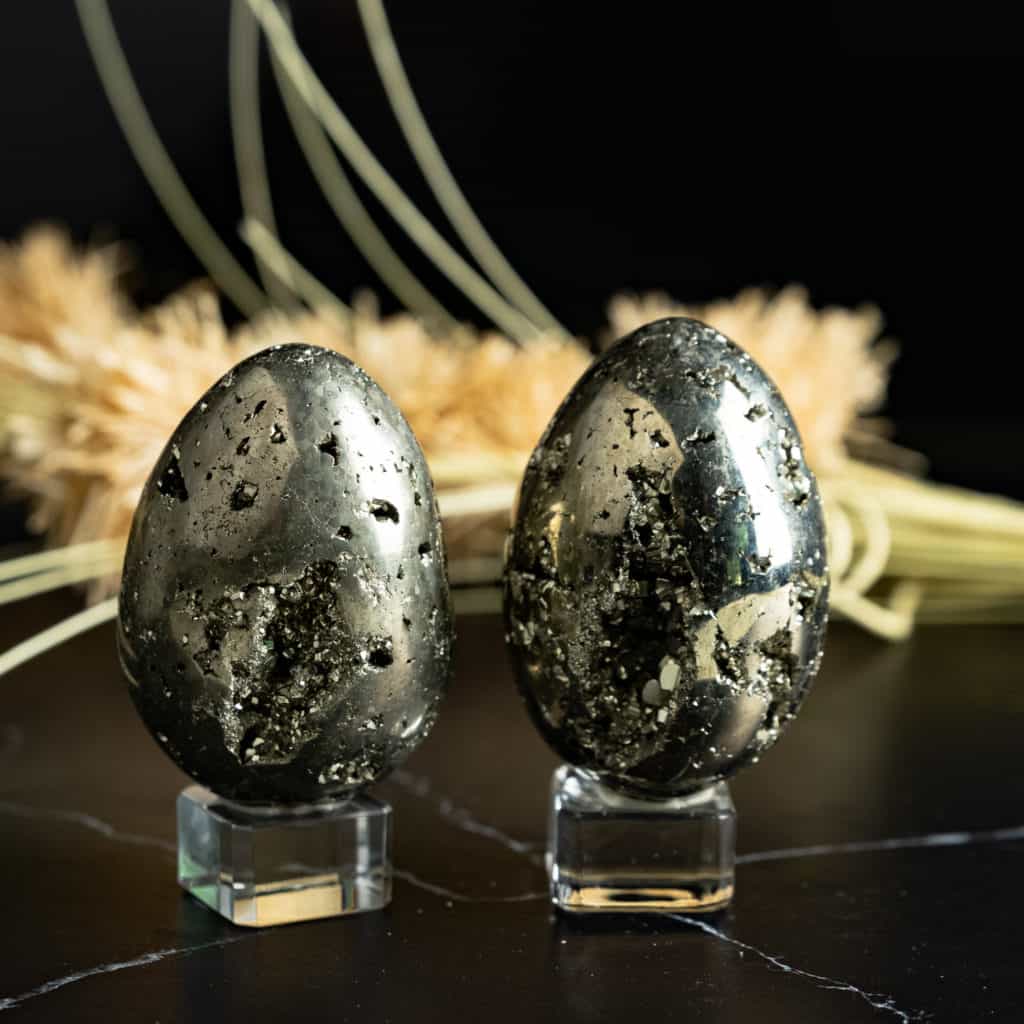Pyrite is Amazing and 2 percent Real Gold!
Pyrite is Amazing and 2 percent Real Gold!
Have you ever heard of Pyrite? If not, then you should definitely check out this amazing mineral. This gemstone has a rich history and was once considered real gold. Pyrite is Amazing and 2 percent Real Gold!
Pyrite is a form of iron sulfide (FeS2) and is found in nature in various colors such as yellow, green, brown or black. The name pyrite comes from Greek words meaning fire stone. Pyrite is Amazing and 2 Percent Real Gold!
This mineral has been known since ancient times, however, its value wasn’t recognized until recently. In fact, Pyrite is now being called the new ‘gold’ because of its high demand. It’s even more valuable than gold.
It’s important to note that Pyrite isn’t pure gold. It contains other minerals like quartz, mica, feldspars, magnetite, ilmenite, rutile, titanite, and zircon. These additional elements give it a unique look and make it different from gold. Pyrite is Amazing and 2 percent Real Gold!
The most common use for Pyrite is jewelry. However, there are many other uses including:
• Jewelry • Tools • Medicine • Gemstones • Paintings • Paperweights • Sculptures • Glassware • Furniture • Mosaic tiles • Stained glass windows • Artwork • Clothing • Textiles • Leather products • Ceramics • Pottery • Woodworking • Metalworking • Machinery • Electronics • Aerospace & Defense • Military equipment • Space exploration • Mining • Oil & Gas • Power generation • Nuclear power • Water treatment • Agriculture • Food processing • Pharmaceuticals • Cosmetics • Dentistry • Veterinary medicine • Biotechnology • Medical devices • Biofuels • Energy storage • Solar energy • Wind energy • Hydropower • Geothermal energy • Other industries Pyrite is Amazing and 2 percent Real Gold!
In addition to these applications, Pyrite can also be used in the production of steel, aluminum, copper, zinc, lead, silver, nickel, titanium, tin, tungsten, platinum, palladium, mercury, antimony, arsenic, bismuth, cadmium, chromium, cobalt, cesium, cerium, calcium, carbon, chlorine, columbium, copper, dysprosium, erbium, europium, germanium, hafnium, holmium, indium, iridium, lanthanum, lithium, magnesium, manganese, molybdenum, neodymium, Pyrite is Amazing and 2 Percent Real Gold!, niobium, nitrogen, osmium, phosphorus, potassium, praseodymium, promethium, protactinium, rubidium, samarium, scandium, silicon, sodium, strontium, sulfur, tellurium, thallium, thorium, uranium, vanadium, yttrium, zinc, zirconium, and others. Pyrite is Amazing and 2 percent Real Gold!
A New Form Of Gold Is Being Discovered!
What if I told you that there is a new form of gold on earth? A mineral that is much rarer than gold itself. You might think that I am talking about diamonds. But no, I am talking about Pyrite. Pyrite is Amazing and 2 percent Real Gold!
What is Pyrite? Pyrite is Amazing and 2 percent Real Gold!
Pyrite is an iron sulfide mineral with chemical formula FeS2. It is commonly colored green, blue, red, pink, orange, brown, black, gray, or white.
Where does Pyrite come from?
Pyrite is formed when molten iron reacts with water at temperatures between 1,000°C (1,832°F) and 2,500°C (4,918°F). Pyrite is Amazing and 2 percent Real Gold!
How do we know that Pyrite is really a form of gold? Pyrite is Amazing and 2 percent Real Gold!
Well, Pyrite is actually very similar to gold. Both have the same atomic number (atomic weight), which is 79. Also, both are soft metals that easily oxidize. They both contain electrons and they both have a negative electrical charge.
However, unlike gold, Pyrite is not a precious metal. It doesn’t have any real monetary value. Instead, Pyrite is considered to be a non-precious metal because it has little industrial value.
Because Pyrite is only found in certain locations around the world. The reason why this happens is because Pyrite is extremely hard to mine. This makes it difficult to extract from its natural environment.
There are two main types of Pyrite deposits:
• Sulfides – Pyrite occurs as veins within igneous rocks such as granite, diorite, and basalt. These minerals are usually associated with other valuable minerals like gold, silver, copper, and zinc.
• Oxidized Pyrite – Pyrite is often found in association with other sulfide minerals such as pyrrhotite, marcasite, chalcopyrite, bornite, and sphalerite.
The most common type of Pyrite deposit is oxidized Pyrite. This type of Pyrite is called “cinnabar”. Cinnabar is one of the most important sources of mercury. Mercury is used for many different purposes including making batteries, thermometers, medicines, and pesticides.
Is There Any Value In Pyrite?
Yes, there is some value in Pyrite. Pyrite is used in the production of ferrochromium alloys. Ferrochromium alloys are used in the manufacture of stainless steel.
Ferrochromium Alloys
Stainless Steel
In order to make stainless steel, iron ore must first be converted into pig iron. Pig Iron is then refined into steel. During this refining process, impurities are removed from the iron. Impurities include carbon, phosphorous, sulfur, oxygen, and nitrogen. After the steel is made, it is heat treated to remove residual stresses. Heat treatment is done by heating the steel up to 900 degrees Celsius (1642° Fahrenheit). At this temperature, the steel becomes austenitic. Austenitic steel is harder than martensitic steel. When the steel cools down, it goes back to being martensitic. Martensitic steel is softer than austenitic steel.
After the steel is heat treated, it is ready to be cut into various shapes. Stainless steel can also be polished. Polishing removes surface defects and scratches.
Pyrite Is Used To Make Mercury!
Mercury is used in many products. For example, mercury is used to make thermometers, barometers, and batteries. However, the biggest use of mercury is in the manufacturing of chloralkali cells. Chloralkali cells are used to produce chlorine gas.
Chlorine is used to bleach textiles, clean swimming pools, and disinfect drinking water.
Mercury is also used in the production of pesticides. Pesticides kill insects that damage crops.
How Does Mercury Get Into Our Environment?
Mercury gets into our environment through mining, smelting, and burning. Mining involves taking out material from the ground. Smelting involves converting raw materials into useful metals. Burning involves using fossil fuels to create energy.
Mining
When miners dig deep holes in the earth, they may find Pyrite. If a miner finds Pyrite, he or she will have to get rid of it. The easiest way to do this is to put the Pyrite into a furnace. A furnace is an enclosed area where air is heated until it turns into steam. Steam is superheated steam. Superheated steam is very hot. It has more energy than regular steam. Pyrite is Amazing and 2 percent Real Gold!
When the Pyrite is heated, it releases mercury vapor. The mercury vapor comes out of the Pyrite because the two elements are chemically bonded together. Once the mercury vapor leaves the Pyrite, it travels through the air. Some of the mercury vapor settles on the ground. Other parts of the mercury vapor stay in the air.
Smelting
During smelting, coal is burned. Coal burns at about 1000 degrees Celsius (1832°F). This high temperature causes the metal inside the coal to melt. As the metal melts, it forms liquid droplets. These liquid droplets fall to the bottom of the furnace. They form slag. Slag is a mixture of molten metal and other substances.
The slag is poured off the top of the furnace. The slag contains most of the mercury vapor. The rest of the mercury vapor stays in the air. Pyrite is Amazing and 2 percent Real Gold!
Burning
In addition to smelting, people burn coal for electricity. People who live near power plants often complain about the smell of smoke coming from chimneys. The smoke smells bad because it contains pollutants like sulfur dioxide and nitrous oxide.
Sulfur dioxide is a colorless gas. Nitrous oxide is a colorless gas with a pungent odor. Both gases cause respiratory problems.
Sulfur dioxide is produced when sulfur reacts with oxygen. Oxygen combines with hydrogen sulfide to form sulfur dioxide. Hydrogen sulfide is a chemical compound containing sulfur and hydrogen.
Nitrous oxide is formed when nitrogen reacts with oxygen. Nitrogen combines with oxygen to form dinitrogen tetroxide. Dinitrogen tetroxide is a chemical compound with four atoms of nitrogen and one atom of oxygen.
Nitrogen is found in natural gas. Natural gas is made up of methane molecules. Methane is a simple hydrocarbon molecule. Hydrocarbons are organic compounds composed of carbon and hydrogen. Carbon is the fourth element after hydrogen, oxygen, and nitrogen. Pyrite is Amazing and 2 percent Real Gold!
What Happens When We Burn Fossil Fuels?
When we burn fossil fuels, we release pollutants that can harm us. Pollutants include:
• Sulfur dioxide
• Nitrous oxide
• Chlorofluorocarbons
• Lead
• Arsenic
• Cadmium
• Chromium
• Nickel
• Copper
• Zinc
• Manganese
• Iron
• Aluminum
• Mercury
• Radon
• Bromine
• Strontium
• Barium
• Cesium
• Iodine
• Thallium
• Molybdenum
• Tungsten
• Vanadium
• Lithium
• Potassium
• Calcium
• Sodium
• Boron
• Phosphorus
• Magnesium
• Silicon
• Titanium
• Uranium
• Cobalt
• Selenium
• Antimony
• Tellurium
• Bismuth
• Germanium
• Osmium
• Platinum
• Palladium
• Rhodium
• Iridium
• Ruthenium
• Rhenium
• Gallium
• Indium
• Tin
• Tellurium
• Iodide
• Xenon
• Krypton
• Rubidium
• Yttrium
• Zirconium
• Niobium
• Hafnium
• Tantalum
• Tungstene
• Technetium
• Thorium
• Protactinium
• Francium
• Radon
A few of these chemicals are radioactive. Radioactive materials emit radiation. Radiation has many different types. X-rays are an example of ionizing radiation. Ionizing radiation damages cells by breaking their DNA.
Radioactivity
Some chemicals are radioactive. Chemicals that contain radioactivity are called radionuclides. Radioactive material emits radiation. It’s important to know what kind of radiation each type of radioactive material gives out. Pyrite is Amazing and 2 percent Real Gold!
Radiation comes in two main types:
• Ionizing radiation
• Non-ionizing radiation
Ionizing radiation is dangerous. It can damage our bodies. It can also change the structure of some elements.
Non-ionizing radiation does not have enough energy to break down matter. It cannot penetrate very far into our bodies.
Some non-ionizing radiation is harmful. For instance, ultraviolet light (UV) causes sunburn. Other forms of non-ionizing radiation may be beneficial. They help keep us healthy.
The amount of radiation given off depends on how much of the substance is present. This means that some substances give off more radiation than others. Pyrite is Amazing and 2 percent Real Gold!
How Much Radiation Is Given Off By Different Substances? Pyrite is Amazing and 2 percent Real Gold!
Table 1 shows the amount of radiation given off by various substances. Pyrite is Amazing and 2 Percent Real Gold! The table shows the dose rate for each substance. A dose rate is the number of roentgens per hour that would cause the same effect as one roentgen. One roentgen is equal to 100 rem.
Table 1: Amount of radiation given off by different substances
Substance Dose Rate (roentgens/hour)
Water 0.0013
Air 0.0003
Coal 0.0015
Petroleum 0.0016
Wood 0.0018
Nuclear fuel 0.0020
Uranium ore 0.0022
Graphite 0.0023
Silver 0.0024
Gold 0.0025
Diamond 0.0027
Lead 0.0028
Ceramic glaze 0.0030
Glass 0.0031
Paper 0.0032
Wood pulp 0.0033
Cotton 0.0034
Wool 0.0035
Silk 0.0036
Leather 0.0037
Plastic 0.0038
Rubber 0.0039
Textile fibers 0.0040
Paper products 0.0041
Wood 0.0042
Glass 0.0043
Ceramics 0.0044
Leather 0.0045
Plastics 0.0046
Rubber 0.0047
Textiles 0.0048
Wood 0.0049
Glass 0.0050
Ceramics 0.0051
Leather 0.0052
Plastics 0.0053
Rubber 0.0054
Textiles 0.0055
Paper 0.0056
Wood pulp 0.0057
Cotton 0.0058
Wool 0.0059
Silk 0.0060
Leather 0.0061
Plastic 0.0062
Rubber 0.0063
Textiles 0.0064
Paper 0.0065
Wood 0.0066
Ceramics 0.0067
Leather 0.0068
Plastic 0.0069
Pyrite is Amazing and 2 Percent Real Gold!
Pyrite is Amazing and 2 percent Real Gold! There is Real Gold in Pyrite!
Recently, it was discovered that there is actually some real gold in pyrite . Pyrite contains a small percentage of gold. In fact, it is estimated that about 2% of all pyrite is made up of pure gold.
This is amazing because most people think that pyrite is just worthless rock. But, this is not true at all! Pyrite is actually quite valuable! Pyrite is Amazing and 2 Percent Real Gold!
In summary, the following are some of the things that I have learned about Pyrite including that Pyrite is Amazing and 2 percent Real Gold!
1) Pyrite is a real gold mine! It can be found in many places around the world. The best place to find it is in South America. There you will find large deposits of pyrite in the form of veins or lodes. These veins are usually very thick and contain high concentrations of gold.
2) Pyrite is one of the most important minerals on earth. It has been used for thousands of years because it is so useful.
3) Pyrite is a natural mineral which contains iron and sulfur. Iron makes pyrite magnetic. This means that if you hold a piece of pyrite over a magnet, it will stick to the magnet. Pyrite is Amazing and 2 Percent Real Gold!
How to stay in touch!
Check out our website for more such information and shop from the best collection of crystals.
Follow us on Facebook, Instagram, Tik Tok, and Twitter! Pyrite is Amazing and 2 Percent Real Gold!
If you are looking for a reputable seller of all things metaphysical, check out www.TheCrystalApothecaryCo.com! Pyrite is Amazing and 2 Percent Real Gold!
Be sure to stay up-to-date on all our Witchy Content, Podcasts, Informative Videos, & Free Give Away Contests by FOLLOWING OUR NEWSLETTER HERE!

